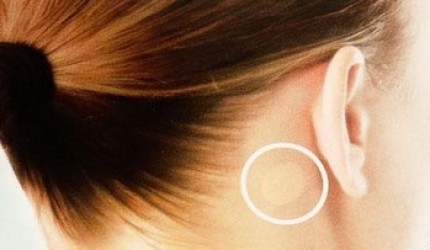Wishing everyone a safe and happy Christmas and New Year – Meri Kirihimete from the Healthify team.
Hyoscine patch
Commonly called Scopoderm TTS or scopolamine hydrobromide
Key points about hyoscine patch
- Hyoscine patch is used to prevent nausea and vomiting caused by motion sickness.
- It is also called hyoscine hydrobromide or Scopoderm TTS® or scopolamine hydrobromide.
- Find out how to apply it safely and possible side effects.

Hyoscine (also called scopolamine) is used to prevent nausea and vomiting caused by motion sickness. It works by blocking certain signals to the brain that can cause nausea and vomiting. In New Zealand hyoscine patch (Scopoderm TTS) can be bought over the counter from your pharmacy without a prescription. Read more about motion sickness.
Note: hyoscine is also available as tablets which are used to relieve tummy (stomach) cramps or pain. Read more about hyoscine tablets.
- The dose of hyoscine patch is 1 patch applied to the skin behind the ear.
- When used for motion sickness, it should be applied at least 5 hours before the journey.
- You can remove the patch after the journey or if you are taking a long journey you can keep in on for up to 72 hours (3 days). The patch will still be effective. If treatment is to be continued for more than 3 days, remove the first patch and apply a new one behind the opposite ear.
Note: hyoscine patches can make you sleepy which may continue into the following day after you've removed the patch. It is important not to drive until you know how this medicine affects you.

- Peel off the clear backing from the patch and apply it to a clean, dry, area of the skin behind the ear.
- Choose an area with little or no hair and free of scars, cuts, or irritation.
- Press the patch firmly for at least 30 seconds to make sure it sticks well, especially around the edges.
- Apply the patch straight after removing it from its wrapping. Do not cut it into smaller pieces and do not touch the sticky surface of the patch.
- Use only one patch at a time.
- Wash your hands thoroughly with soap and water after handling the patch to prevent the medication accidentally getting into your eyes. Also, wash the area behind the ear after the patch was removed.
- If you forget to wear or change a patch, apply or replace with a new one when you remember. Do not apply more than one patch at a time to make up for a missed dose.
Tips
- Bathing and showering: the patch should stay in place even during showering, bathing, or swimming.
- Replacing the patch: if the patch does come off or needs to be replaced, remove the old patch and place a new one behind the other ear, on a clean, dry, hairless area.
- Disposing of the patch: when throwing away the old patch, fold it in half with the sticky side together and throw away in the rubbish. Keep it out of the reach of children and pets.
- Drinking alcohol: limit or avoid alcohol while you are wearing the patch. It can increase your chance of side effects such as drowsiness (make you sleepy).
- Tell your health provider: some procedures such as MRI scans may overheat the patch and burn your skin. If you are wearing a hyoscine patch, always let your health provider know.
- Are you pregnant or breastfeeding?
- Have you ever had problems with your bowel (such as reflux, diarrhoea, ulcerative colitis, bowel obstruction)?
- Do you have high blood pressure, a fast heart rate or any other problems with your heart?
- Do you have prostate problems or problems passing urine (wee)?
- Do you have glaucoma (increased pressure in your eye)?
- Do you have problems with your liver or kidneys?
- Have you ever had problems with psychosis?
- Do you have myasthenia gravis?
- Are you taking or using any other medicines? This includes any medicines being taken which are available to buy without a prescription, as well as herbal and complementary medicines.
If so, it’s important that you tell your doctor or pharmacist before hyoscine patch. Sometimes a medicine isn’t suitable for a person with certain conditions, or it can only be used with extra care.
Like all medicines, hyoscine patch can cause side effects, although not everyone gets them. Often side effects improve as your body gets used to the new medicine.
| Side effects | What should I do? |
|---|---|
|
|
|
|
|
|
|
|
|
|
|
|
| Read more about medicines and side effects and reporting a reaction you think might be a side effect. | |
Hyoscine patch can interact with some medicines and herbal supplements so check with your doctor or pharmacist before starting hyoscine patch or before starting any new medicines.
The following link has more information on hyoscine patch.
Hyoscine hydrobromide (patch)(external link) New Zealand Formulary Patient Information
Reference
- Hyoscine hydrobromide(external link) New Zealand Formulary, NZ
Brochures

Medicines and side effects
Healthify He Puna Waiora, NZ, 2024

Health Quality and Safety Commission, NZ, 2019 English, te reo Māori
Credits: Sandra Ponen, Pharmacist, Healthify He Puna Waiora. Healthify is brought to you by Health Navigator Charitable Trust.
Reviewed by: Angela Lambie, Pharmacist, Auckland
Last reviewed:
Page last updated:





